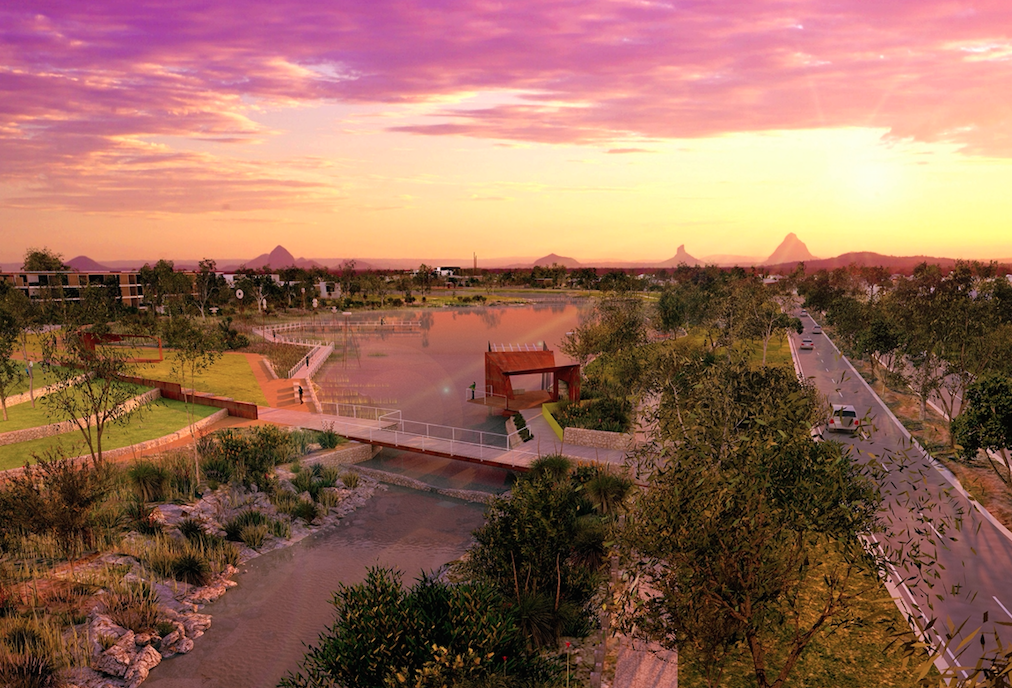Code Green Solutions


Caloundra South
More than 2,600 families will be living in Green Star apartments, 8,000 students will study in Green Star schools, 80,000 will be living in masterplanned communities and upwards of 100,000 workers will operate from Green Star offices, thanks to a growing commitment to sustainability over the last financial year.
While our industry tends to talk in terms of square metres of space – and 43 million square metres of certified buildings, fitouts and communities in the last year is impressive – the sheer number of people who will be living, working and playing in more sustainable buildings as a result of our collective efforts over the last year is simply staggering.
Green Star certifications continue to climb year-on-year. In the 2014 financial year, the Green Building Council of Australia certified 118 projects – and each of these was for buildings or office fitouts.
The 2015 financial year is a very different story.
The ‘new generation’ Green Star rating system consists of just four rating tools: Design & As Built (for both the design and construction of any building); Interiors (for any interior fitout); Communities (for precinct-scale masterplans); and Performance (for building operations).
While we issued 140 certifications for our ‘legacy’ rating tools, we also certified six communities, five projects for building operations, and five certifications under our new rating tools.
That may not sound impressive, until you unpack the projects.
The communities included Greater Curtin University and Alkimos Beach in Perth, Caloundra South, Ecco Ripley and Brisbane Airport in Queensland, and Tonsley in Adelaide. The area of all these projects is equal to 3.7 square kilometres. Imagine an area extending from the Sydney Opera House to Sydney Park, and from Annandale to Centennial Park and you get a sense of the size.
But looking at the amount of people who’ll live and work in these communities is even more awe-inspiring. More than 80,000 people will call these communities home – the same number of people that live in Rockhampton.
And more than 140,000 people will work there each day – just as many people as those living in Cairns.
The impact of the Green Star – Performance rating tool is equally impressive. The first Green Star – Performance rating was snagged by GPT Group for NAB’s office at 800 Bourke Street in Melbourne. This rating represents a watershed moment for the office market, as GPT Group now has independent verification that the building ‘stacks up’ against newer offices built to Green Star benchmarks. A Green Star – Performance rating will ensure 800 Bourke Street holds its value in a highly competitive commercial office market.
And competitive it certainly is, with 1.97 million sqm of Green Star office space certified in the last year, and commercial leasing agents around the country agreeing that tenants now see Green Star as synonymous with quality.
Green Star – Performance ratings are also being used by large portfolio owners to meet their international reporting obligations under programs such as GRI and GRESB – which is why we’ve rated 97 buildings across five portfolios of retail, commercial and industrial space in the last year. In fact, 2015 saw us rate as large an area for building operations as we did for new buildings.
Australand’s contribution to this cannot not go unnoticed. Gaining Green Star certification for 12 commercial and 42 industrial properties means Australand now has 1.3 million sqm of Green Star space around Australia.
There were other standout achievements worthy of applause. Lendlease can legitimately lay claim to Australia’s most sustainable office, Commonwealth Bank Place in Sydney. In fact, 6 Star Green Star ratings for the design, construction, interior fitout and ongoing operations demonstrate how a commitment to certification can lead to great outcomes from the beginning of a project, all the way to the end.
Stockland now has the most Green Star shopping centres in the country, with four new certifications in the last year alone.
Supermarket giant Coles achieved a 4 Star Green Star rating for its Hallam store, and now has a prototype for a ‘sustainable supermarket of the future’.
And Victoria’s Regional Rail Link authority gained Green Star ratings for five train stations that will service 54,000 passengers each day.
All in all, our 253 certifications for the 2015 financial year – representing a 116 per cent increase on the previous year – is a serious indicator that sustainability is here to stay.
Looking ahead, the number of projects lining up to achieve Green Star ratings is a good sign. Expect to see everything from aquatic centres to apartments, from hotels to manufacturing headquarters, from restaurants to retirement living villages, and from stadia to shopping centres achieve Green Star ratings in the next year or so.
Australia, is well on its way to becoming a Green Star nation.